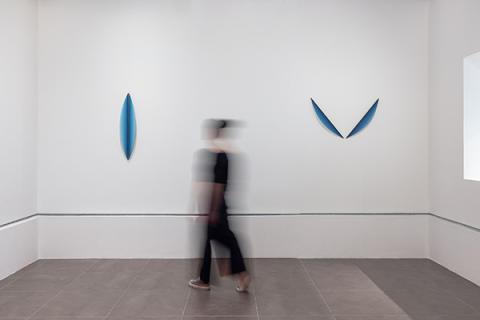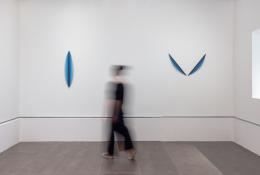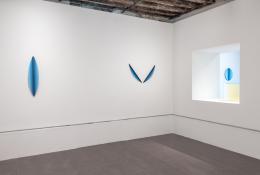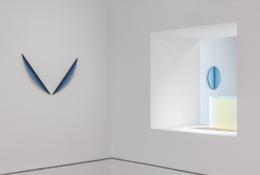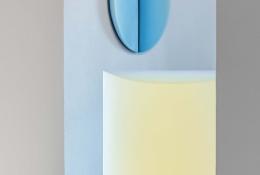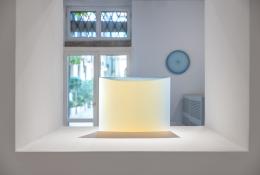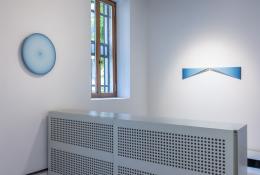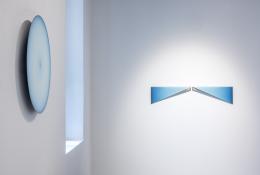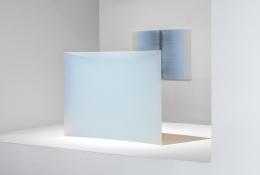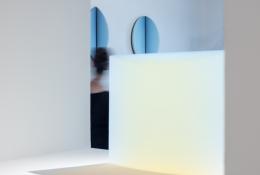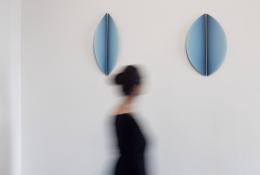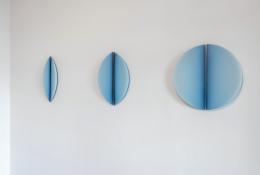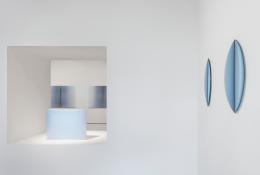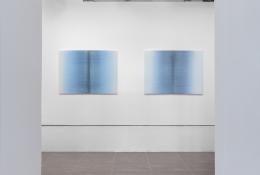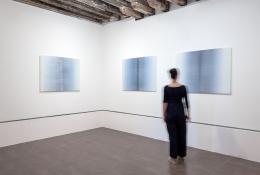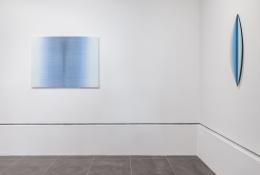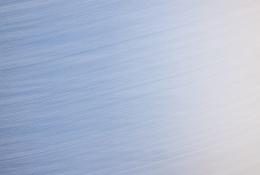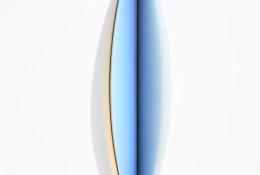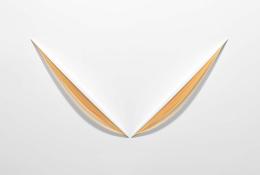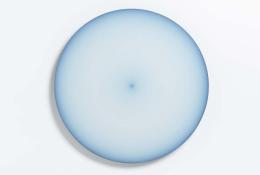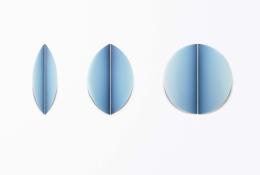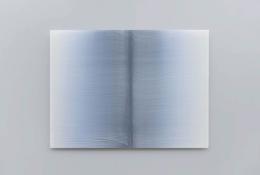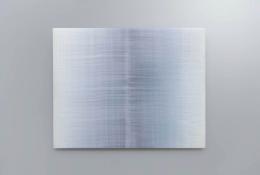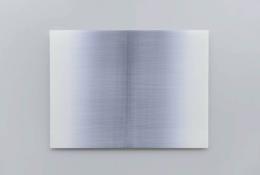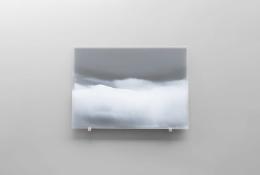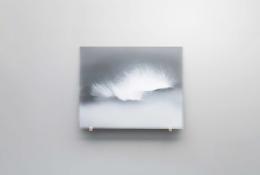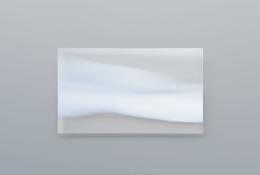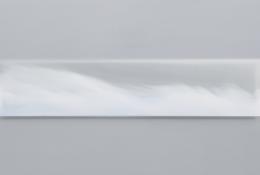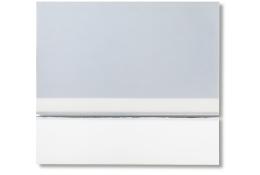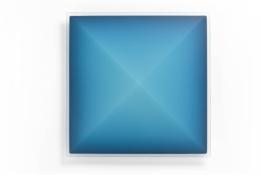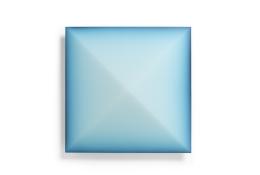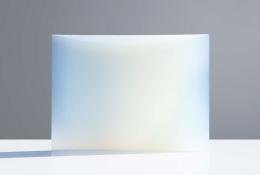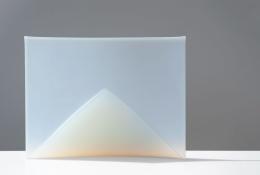Jessica Loughlin - an unexpected blue
Extended until Dec 23, 2025
This is an exhibition of blue, but not made of blue glass, rather the blue color created by light.
The pieces are made with an opaline glass that splits light into its spectrum of warm and cool tones. As light creates the blue color of the sky, it creates the blues in these pieces, tonally changing with the opacity of the glass. Under certain light conditions, however, a pink reflection can be seen, like a glimpse of the last light in a disappearing sunset.
Building on the capacity of glass to both hold and reflect light, Loughlin’s characteristically minimalist glass works contain
a startling spectrum of color and detail, subtly changing color tone in response to the surrounding environment. While
glass is undoubtedly Loughlin’s material, her subject is more intangible: the act of seeing, experiencing and reflecting the
world around us, with each piece forming a poetic statement about the nature of perception.- Caitlin Eyre
The “sky” we see from Earth is blue because air molecules scatter the short wavelengths of sunlight (blue) more than the long wavelengths (red).
At sunrise and sunset, when the Sun is low, natural light must pass through a greater thickness of atmosphere before reaching our eyes than when it is high in the sky. As a result, blue light is “lost” in the atmosphere—unlike during the day—and only red-orange light reaches us, creating the golden hour and sunset hues.
The phenomenon of scattering that colors the sky and clouds is known as Rayleigh scattering (named after British Nobel Prize-winning physicist John William Strutt Rayleigh): it’s an elastic scattering of a light wave caused by particles smaller than the wavelength of the wave itself, occurring when light passes through gases (the atmosphere), liquids, or even solids.
Opal glass, which was created in 16th-century Venetian furnaces, it has been used over the centuries for many different purposes: vases, lamps, clock faces, tableware, containers, etc.
It is produced by adding an opacifying substance during melting. Its distinctive feature is its ability to show variations in color—from bluish to pinkish, or even light green and yellow—that change depending on the light hitting it.
In opal glass, the way light is scattered—and therefore the way we see different colors—depends on the size of the particles of the opacifiers added during melting.
Simply put, it behaves similarly to how light acts in the sky.
“In this terrain, without scale… the near and the far fold into each other.
When we are immersed in a landscape, almost too vast to comprehend and so minimal that the light itself becomes landscape, we often ‘look inward,’ driven by a need to orient ourselves in space and time. I’m interested in the moment when the boundaries between near and far resonate, and those between us and what we observe dissolve.
For this exhibition, I will present the series ‘resonance’ and ‘into the fold.’ These works are made with water and glass powder. They are almost like weavings of water, like a veil in which light and space resonate from within. They represent the fabric that binds us to our environment—a relationship in constant evolution that deepens over time, until we realize we are one and the same.”
- Jessica Loughlin
